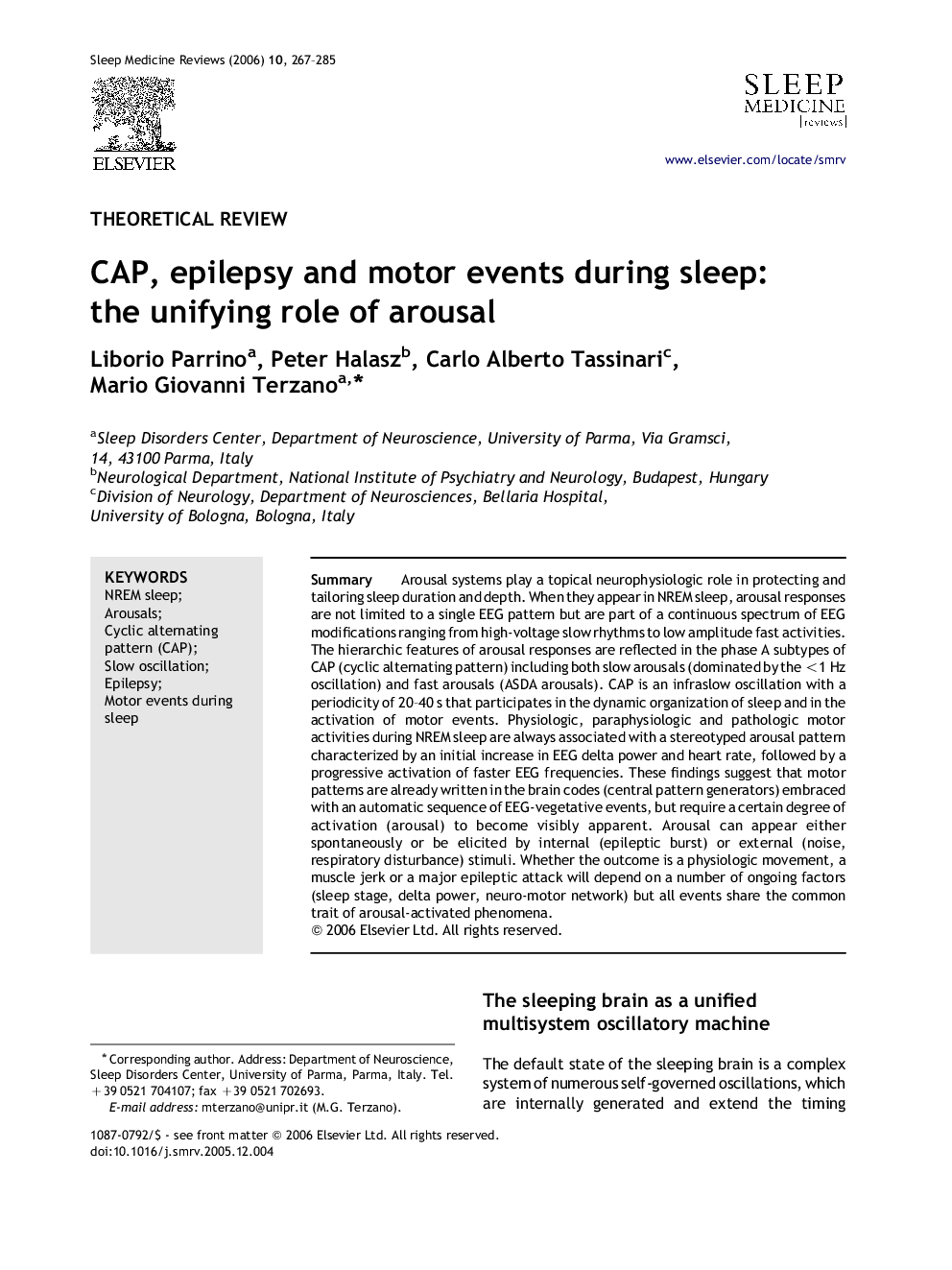| Article ID | Journal | Published Year | Pages | File Type |
|---|---|---|---|---|
| 3091902 | Sleep Medicine Reviews | 2006 | 19 Pages |
SummaryArousal systems play a topical neurophysiologic role in protecting and tailoring sleep duration and depth. When they appear in NREM sleep, arousal responses are not limited to a single EEG pattern but are part of a continuous spectrum of EEG modifications ranging from high-voltage slow rhythms to low amplitude fast activities. The hierarchic features of arousal responses are reflected in the phase A subtypes of CAP (cyclic alternating pattern) including both slow arousals (dominated by the <1 Hz oscillation) and fast arousals (ASDA arousals). CAP is an infraslow oscillation with a periodicity of 20–40 s that participates in the dynamic organization of sleep and in the activation of motor events. Physiologic, paraphysiologic and pathologic motor activities during NREM sleep are always associated with a stereotyped arousal pattern characterized by an initial increase in EEG delta power and heart rate, followed by a progressive activation of faster EEG frequencies. These findings suggest that motor patterns are already written in the brain codes (central pattern generators) embraced with an automatic sequence of EEG-vegetative events, but require a certain degree of activation (arousal) to become visibly apparent. Arousal can appear either spontaneously or be elicited by internal (epileptic burst) or external (noise, respiratory disturbance) stimuli. Whether the outcome is a physiologic movement, a muscle jerk or a major epileptic attack will depend on a number of ongoing factors (sleep stage, delta power, neuro-motor network) but all events share the common trait of arousal-activated phenomena.
